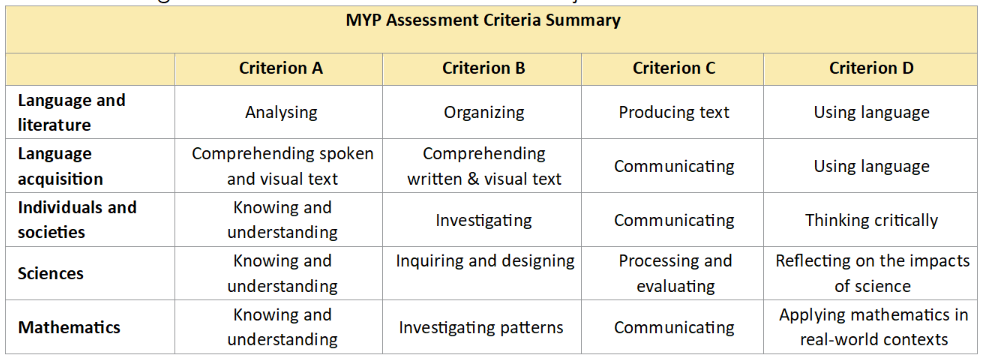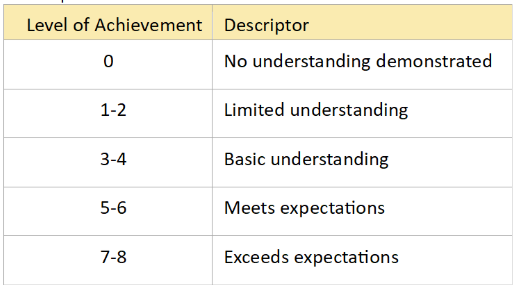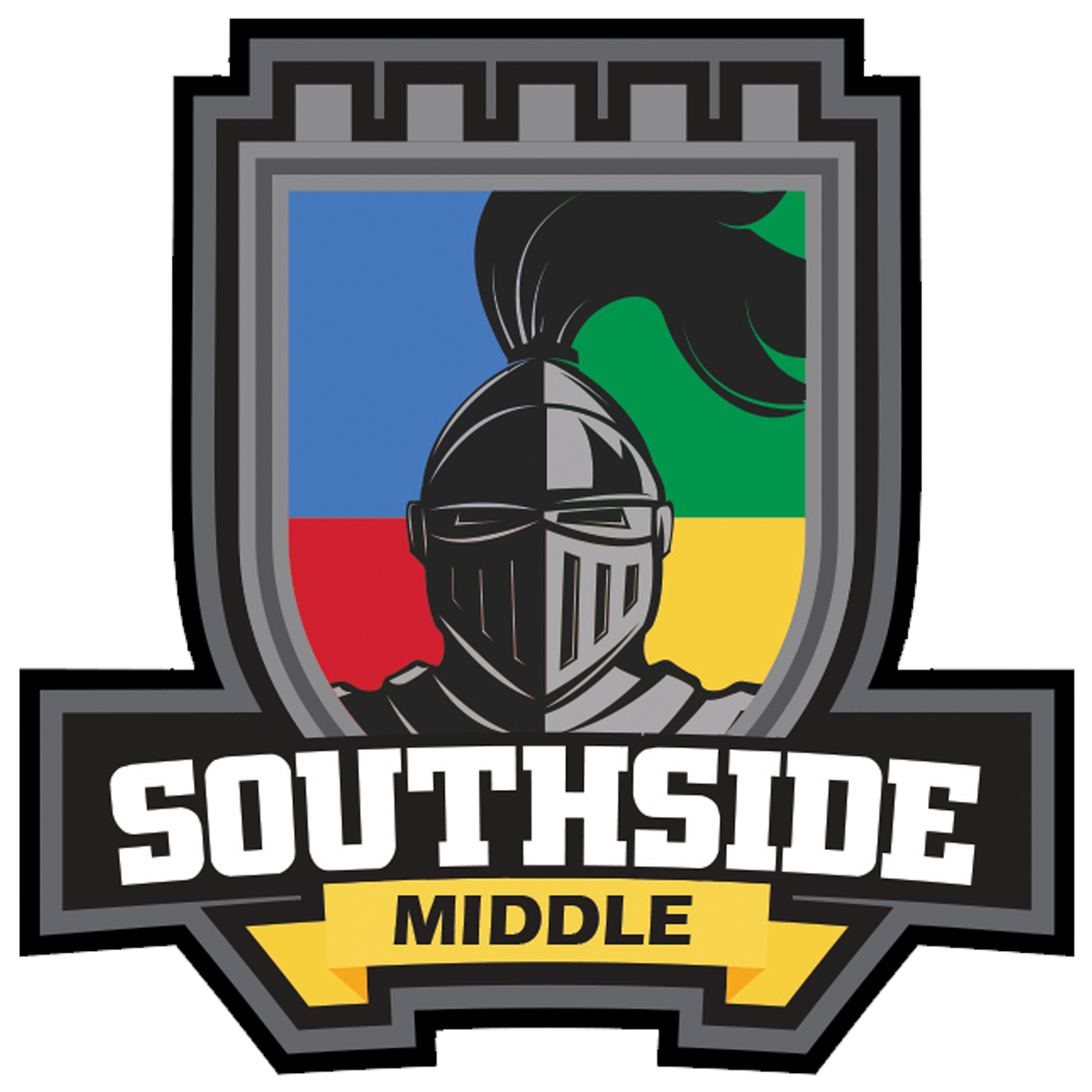Southside Middle School
IB World School
MYP Assessment Policy
Introduction
The goal of this policy is to outline practices used by the faculty to determine student achievement levels in the eight content areas as outlined in this document. This policy was first developed during pre-authorization and was edited and revised by the MYP Coordinator in 2019/20 in order to meet the requirements set forth in MYP: From principles into practice and Programme standards and practices and to update the policy to reflect current practices. The team of IB teachers reviewed and approved the policy in the Fall of 2024 for implementation the following school year, 2024/2025. From this point on, the assessment policy will be reviewed and updated annually by the by the IB team after seeking feedback from all stakeholders in the school community.
Philosophy of Assessment
Southside Middle School is dedicated to ensuring all students are able to achieve academic success and recognizes that success can be achieved and demonstrate in a variety of methods. The faculty and staff of Southside Middle School recognize that the path one takes toward academic success can and will vary from student to students and believe that assessment can be used not only as a tool for evaluation but also for development.
Goals of Assessment
Southside Middle School maintains the following:
1. Assessment is student centered,
taking into account different learning styles and abilities, prior knowledge, and cultural diversity;
providing authentic opportunities for students to demonstrate their knowledge, understanding, and skills;
promoting development of critical thinking, verbal reasoning, and reflection; and
occurring at the beginning, middle, and end of instruction as a tool for informing, driving, and evaluating instruction and achievement.
2. Assessment is a shared process:
Students are aware of objectives and criteria at all stages of the learning process.
Students engage in self-evaluation and reflection in addition to the teacher evaluation of assessment.
Parents are aware of assessment criteria as well as their student progress and achievement through the online grading portal, Focus.
Teachers, students, and parents discuss student learning and achievement through comments on assessments, data chats, online gradebook, email, phone calls, or conferences as needed.
3. Assessment provides meaningful feedback,
providing information regarding student levels of achievement on the MYP objectives and Florida Standards;
identifying current levels of achievement and areas and ways in which to improve via qualitative and/or quantitative feedback during the learning cycle;
4. Assessment drives instruction:
Teachers use qualitative and/or quantitative assessment results to guide the learning process and inform instructional decisions.
Students are given additional opportunities for learning and demonstrating understanding based on assessment results.
Additional supports are provided for students based on results of assessments as needed.
General Assessment Practices
A. Planning for Assessment:
Assessments are designed to drive the instructional planning process.
Assessments are aligned to MYP objectives and the Florida Standards.
Assessments allow for students to demonstrate understanding in multiple formats.
Assessments are planned collaboratively within subjects and/or grade levels.
Assessment tasks increase in complexity of content and thinking skills in each year of the program.
B. Assessment Strategies:
Teachers assess students formatively and summatively using a variety of strategies and formats, including but not limited to the following:
Formative: exit slips, quizzes, short writing assignments, discussion posts, Socratic seminars, classroom presentations, graphic organizers, think-pair-share/accountable conversation, etc.
Summative: short/extended response questions, oral and visual presentations, portfolios, research projects, process journals, lab reports, essays, debates and performances, etc.
Teachers within the same grade level and content administer the same summative assessments.
Teachers use assessment data to inform teaching decisions for the next unit. C. Assessment Criteria:
Summative assessments will be grounded in the IB MYP Assessment Criteria while assessing Florida’s state standards for each subject area.
MYP Assessment Criteria Summary


Each criterion is assessed using a rubric divided into five bands, each describing the level of achievement on the learning expectation or criterion strand. Below is a chart with generic descriptions used to measure student achievement.

Individual units will have task-specific rubrics explaining what must be done to demonstrate achievement of specific strands for each summative assessment.
Each set of criteria will be assessed a minimum of twice a year in accordance with requirements set forth in each course’s subject guide.
Assessment criteria is specific to each grade/year of the MYP as follows:
6th Grade – Year 1 Criteria Rubrics
7th Grade – Year 1 Criteria Rubrics for 1st Semester
Year 2 Criteria Rubrics for 2nd Semester
8th Grade – Year 3 Criterial Rubrics
D. Recording and Reporting Achievement
Teachers record and report student achievement through the use of the online grade reporting platform: Focus, semi-quarter progress reports, and quarterly report cards.
Achievement is reported using standardized letter grades as required by the district.
In order to translate MYP scores to percent grades as required by the district, the following conversion was designed.

E. Analysis of Assessment
Assessment data is analyzed individually by teachers and collaboratively with subject teams, coaches, interventionists, and administration.
Assessment data influences planning, teaching, and learning.
Assessment data is analyzed to determine satisfactory growth on state standards as well as progress toward MYP assessment criteria.
Formative Assessment
Teachers use formal and informal formative assessments to drive instruction on a daily basis in a variety of forms including but not limited to: pre-assessments, daily/lesson cycle exit tickets, questioning, checks for understanding, peer review, teacher observation, conferencing, etc. Student performance on formative assessments will guide instruction during the lesson cycle and enable teachers to include additional supports and/or opportunities for enrichment for students who need it. Summative assessments will cover state standards while incorporating the MYP assessment criteria.
Summative Assessment
Summative assessments will be used at the culmination of units to determine student progress toward proficiency on state standards and MYP objectives and guide teaching decisions. In addition, overall student performance on summative assessments will be used to help inform reflections on and evaluation of the teaching process during the unit. Summative assessments will cover state standards while incorporating the MYP assessment criteria.
Required External Assessments
External assessments are required by Duval County Public Schools and/or the state of Florida. Southside Middle School teachers proctor the exams but are not part of the assessment creation process. These assessments are used by the state and district to evaluate student mastery of the state standards or course requirements.
A. District Assessments – these assessments are created by district personnel and are
Beginning of Year Pretest – all courses that do not have a state assessment • Quarterly Curriculum Guide (progress-monitoring) assessments - core subjects (e.g. Language and Literature, Mathematics, Science, Individuals and Societies: Civics)
End of Semester Post Test – electives (e.g. Health and Physical Education, Performing Arts: Music Exploration, Visual Arts: 2D Studio Art)
End of Year Post Test – all courses without a state assessment
B. State Assessments
FAST Reading – Years 1-3
FAST Math – Years 1-3
Algebra I EOC – Year 3 (for some students)
Grade 8 Science – Year 3
Civics EOC – Year 3
